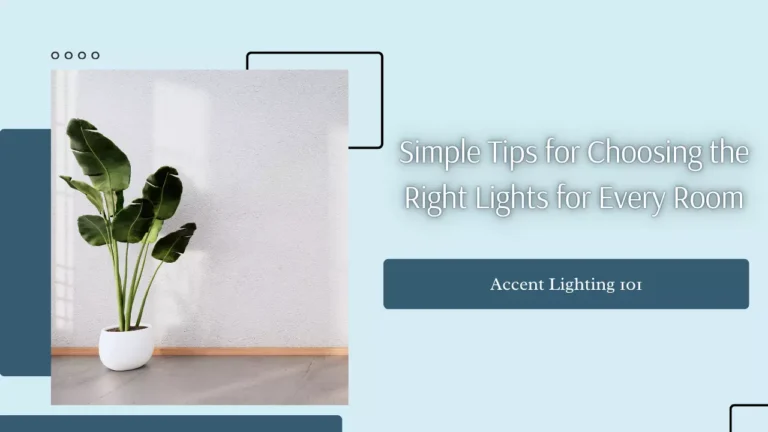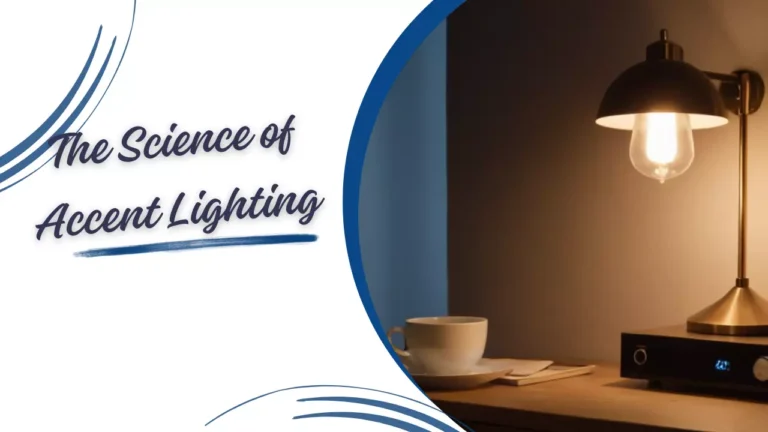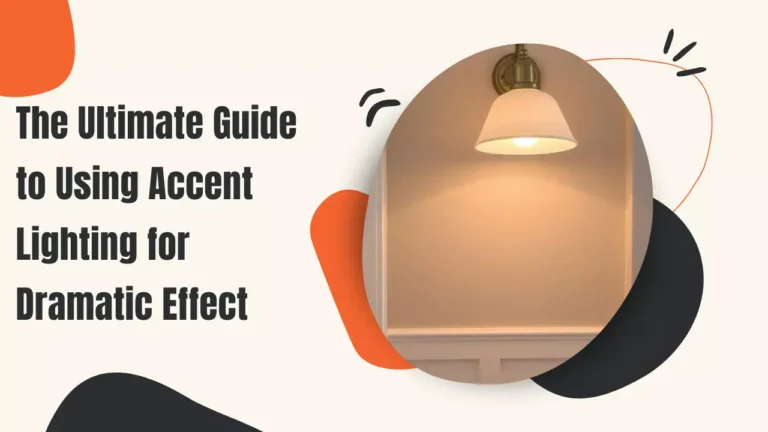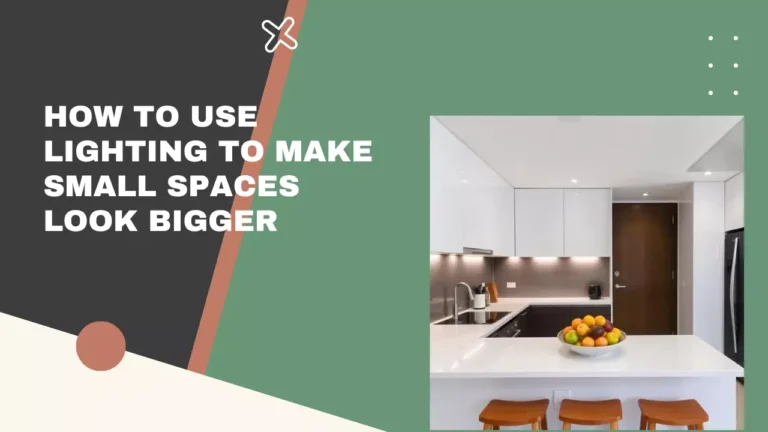The Art of Mood Lighting: How to Set the Perfect Atmosphere in Your Home
Creating the perfect atmosphere in your home involves more than just arranging furniture and choosing paint colors. Mood lighting plays a crucial role in establishing the ambiance of each space. Whether you’re aiming for a cozy, intimate setting or a bright, energizing environment, understanding the art of mood lighting will transform your home into a haven tailored to your preferences.
Understanding Mood Lighting
Mood lighting refers to the use of light to influence the ambiance and emotional response of a space. Unlike general lighting, which provides uniform illumination, mood lighting creates various atmospheres through different techniques and fixtures.
What Is Mood Lighting?
Mood lighting involves using light sources and techniques to evoke specific feelings and atmospheres. This type of lighting can dramatically alter how a room feels. For instance, soft, warm lighting can create a cozy, inviting atmosphere, while cool, bright lighting might energize and focus.
- Purpose: The primary purpose of mood lighting is to enhance the emotional quality of a space. By adjusting the intensity, color, and distribution of light, you can make a room feel relaxed, romantic, or even vibrant.
- Contrast with General Lighting: While general lighting illuminates a space uniformly for daily activities, mood lighting focuses on enhancing the mood or atmosphere. It adds depth and character, contributing to a more personalized and enjoyable living environment.
Benefits of Mood Lighting
Mood lighting offers several benefits that extend beyond aesthetics. By incorporating mood lighting into your home, you can:
- Enhance Ambiance: Create the desired atmosphere for different activities or times of day. For example, use dim lighting in the evening to create a relaxing environment after a long day.
- Improve Functionality: Tailor the lighting to suit specific tasks or moods. Bright lights can boost concentration in a home office, while softer lights are ideal for winding down in the living room.
- Increase Comfort: Proper mood lighting can make spaces feel more welcoming and comfortable. It allows for greater control over the ambiance, contributing to overall well-being.
Choosing the Right Lighting Fixtures
Selecting the right lighting fixtures is crucial for achieving the perfect mood. Each type of fixture serves a different purpose and contributes to the overall atmosphere.
Types of Lighting Fixtures
- Table Lamps: These are ideal for adding soft, focused light to specific areas. Table lamps work well on bedside tables or desks, offering both function and style.
- Floor Lamps: Floor lamps provide ambient or task lighting depending on their design. They can be used to illuminate corners or create a focal point in a room.
- Wall Sconces: Wall sconces offer soft, indirect lighting that enhances the atmosphere without overwhelming the space. They are perfect for hallways or accent walls.
- Pendant Lights: These fixtures hang from the ceiling and are great for providing direct lighting over dining areas or kitchen islands. They add a touch of elegance and style to the room.
- Recessed Lighting: Installed into the ceiling, recessed lighting creates a clean, modern look and provides uniform illumination. It is often used in combination with other lighting sources.
Choosing Light Bulbs
The choice of light bulbs is just as important as the fixtures themselves. Here’s what to consider:
- Color Temperature: Light bulbs come in various color temperatures, from warm white to cool white. Warm white (2700K) is ideal for creating a cozy atmosphere, while cool white (4000K) is better for workspaces.
- Brightness: Measured in lumens, the brightness of the bulb affects the overall mood. Lower lumens create a softer, more intimate atmosphere, while higher lumens offer bright, energizing light.
- Dimmer Capabilities: Opt for bulbs that are compatible with dimmer switches. This allows you to adjust the lighting according to your needs and mood.
Creating Mood Lighting in Different Spaces
Each room in your home has its own unique needs when it comes to mood lighting. Here’s how to set the perfect atmosphere in various spaces.
Living Room
The living room is often the heart of the home, where relaxation and socialization occur. For the ideal mood lighting:
- Layered Lighting: Use a combination of ambient, task, and accent lighting. Start with overhead fixtures, add table lamps for soft light, and use floor lamps or wall sconces for additional warmth.
- Dimmer Switches: Install dimmer switches to adjust the lighting based on the time of day or activity. This allows for a range of moods from lively gatherings to quiet evenings.
- Accent Lighting: Incorporate accent lighting to highlight artwork or architectural features. This adds depth and character to the space.
Bedroom
Creating a serene and relaxing atmosphere in the bedroom is essential for a restful night’s sleep. Here’s how to achieve it:
- Soft, Warm Lighting: Opt for warm-toned bulbs and soft, diffused light sources. This creates a calming environment conducive to relaxation.
- Bedside Lamps: Place bedside lamps on nightstands for reading and creating a cozy ambiance. Choose lamps with adjustable brightness to suit different needs.
- Dim Lighting: Use dimmable lights or smart bulbs that allow you to control the brightness and color temperature.
Kitchen
In the kitchen, lighting needs to be both functional and inviting. Consider these tips:
- Task Lighting: Focus on task lighting above countertops and cooking areas to ensure visibility while preparing meals.
- Ambient Lighting: Install overhead fixtures or recessed lighting for general illumination. This helps maintain a bright and clean appearance.
- Accent Lighting: Add under-cabinet lighting to highlight countertops and create a warm, welcoming atmosphere.
Bathroom
A bathroom requires a balance of bright, functional lighting and soothing accents:
- Bright Task Lighting: Use bright, direct lighting around mirrors and vanities for grooming and daily routines.
- Ambient Lighting: Incorporate softer, diffused lighting for a relaxing atmosphere during baths or showers.
- Accent Lighting: Consider wall sconces or recessed lights to enhance the bathroom’s design and create a calming environment.
Tips for Effective Mood Lighting
To make the most of your mood lighting, follow these practical tips:
- Use Multiple Light Sources: Combining various types of lighting, such as ambient, task, and accent, helps create a well-balanced atmosphere.
- Adjust Light Intensity: Use dimmers and adjustable fixtures to tailor the lighting to different activities and moods.
- Experiment with Color: Consider using colored bulbs or light filters to add a unique touch to your lighting scheme. This can enhance the mood and personalize your space.
- Incorporate Smart Technology: Smart lighting systems allow for easy control and customization. You can adjust brightness, color, and timing with a smartphone or voice commands.
- Regular Maintenance: Ensure your lighting fixtures and bulbs are clean and functioning properly. Regular maintenance keeps your mood lighting effective and efficient.
By understanding and implementing these principles, you can transform your home into a beautifully lit sanctuary that caters to every mood and occasion.
- Lighting Basics: How to Choose the Right Light Bulb – Lighting Direct
- The Importance of Mood Lighting in Interior Design – Architectural Digest







